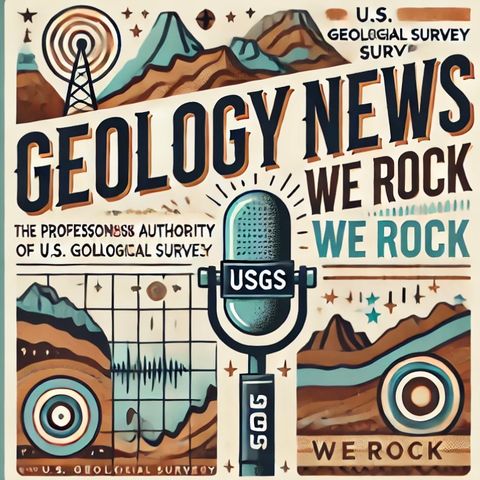Cosmic Halloween: Exploring the Solar System's Spooky Secrets and Delightful Discoveries

Download and listen anywhere
Download your favorite episodes and enjoy them, wherever you are! Sign up or log in now to access offline listening.
Cosmic Halloween: Exploring the Solar System's Spooky Secrets and Delightful Discoveries
This is an automatically generated transcript. Please note that complete accuracy is not guaranteed.
Description
Astrogeology explores the Solar System's Halloween spirit, where cosmic phenomena evoke both tricks and treats. Imagine a journey across our Solar System where each celestial body offers its own eerie...
show moreFirst up is Mars, often referred to as the "Red Planet," which simultaneously evokes visions of the fiery underworld while hosting the solar system's tallest volcano, Olympus Mons. This towering volcano stands as a geological trick, with scientists still puzzled by its massive size and dormant state. Yet, Mars offers a treat through its recurring slope lineae, mysterious dark streaks hinting at the presence of liquid water, and possibly, the key to life.
Across the asteroid belt, we encounter Ceres, a dwarf planet known for delivering cosmic tricks. Its surface features bright spots within craters, likely caused by salt deposits. This phenomenon baffles astronomers, making Ceres a cosmic Halloween enigma. But it also provides treats in the form of valuable scientific insights into early solar system conditions, offering clues to the building blocks of planets.
Next, we glide past Jupiter's moon Europa. Enshrouded in an icy shell, it conceals a hidden ocean beneath its frozen surface. This enigmatic moon plays tricks with its chaotic terrain, characterized by cracks and ridges suggesting a dynamic and possibly habitable environment. The treat lies in its potential to harbor life, tantalizing scientists with the possibility of discovering extraterrestrial organisms—an ultimate cosmic treat.
As we venture further, our path leads to Saturn, where Titan, its largest moon, beckons with both tricks and treats. Its thick, smoggy atmosphere hides liquid methane lakes. On Titan, methane rains and rivers sculpt channels on its surface, presenting a mirror to Earth's hydrological activities in an alien mold. The trickery lies in navigating its thick atmosphere, but the treat emerges from the prospect of understanding prebiotic chemistry similar to early Earth.
Beyond Titan, Enceladus offers an icy spectacle. This moon erupts with geysers that spew water vapor and organic materials into space, creating a ghostly halo around its south pole. Such activity hints at hydrothermal vents beneath an ice-covered ocean, presenting both a puzzling cosmic trick and the tantalizing treat of potentially habitable conditions.
Lastly, venture into the darkest depths of the Kuiper Belt to find Pluto, a dwarf planet with a sideways heart-shaped glacier called Tombaugh Regio. It harbors ice volcanoes and a layered atmosphere that foils predictions, a classic astrogeological trick. Yet, the treat is in its rich geological diversity, challenging our understanding and redefining planetary science.
In this celestial Halloween tour, the Solar System is a grand stage of natural wonders, where each planet, moon, and distant body exhibits its own suite of tricks and treats. From the towering heights of Martian volcanoes and icy moon-oceans to mysterious asteroid features and cryovolcanic eruptions, the cosmos is an ever-intriguing tapestry, inviting us to explore and uncover its mysteries.
Information
| Author | QP-4 |
| Organization | William Corbin |
| Website | - |
| Tags |
Copyright 2024 - Spreaker Inc. an iHeartMedia Company

Comments